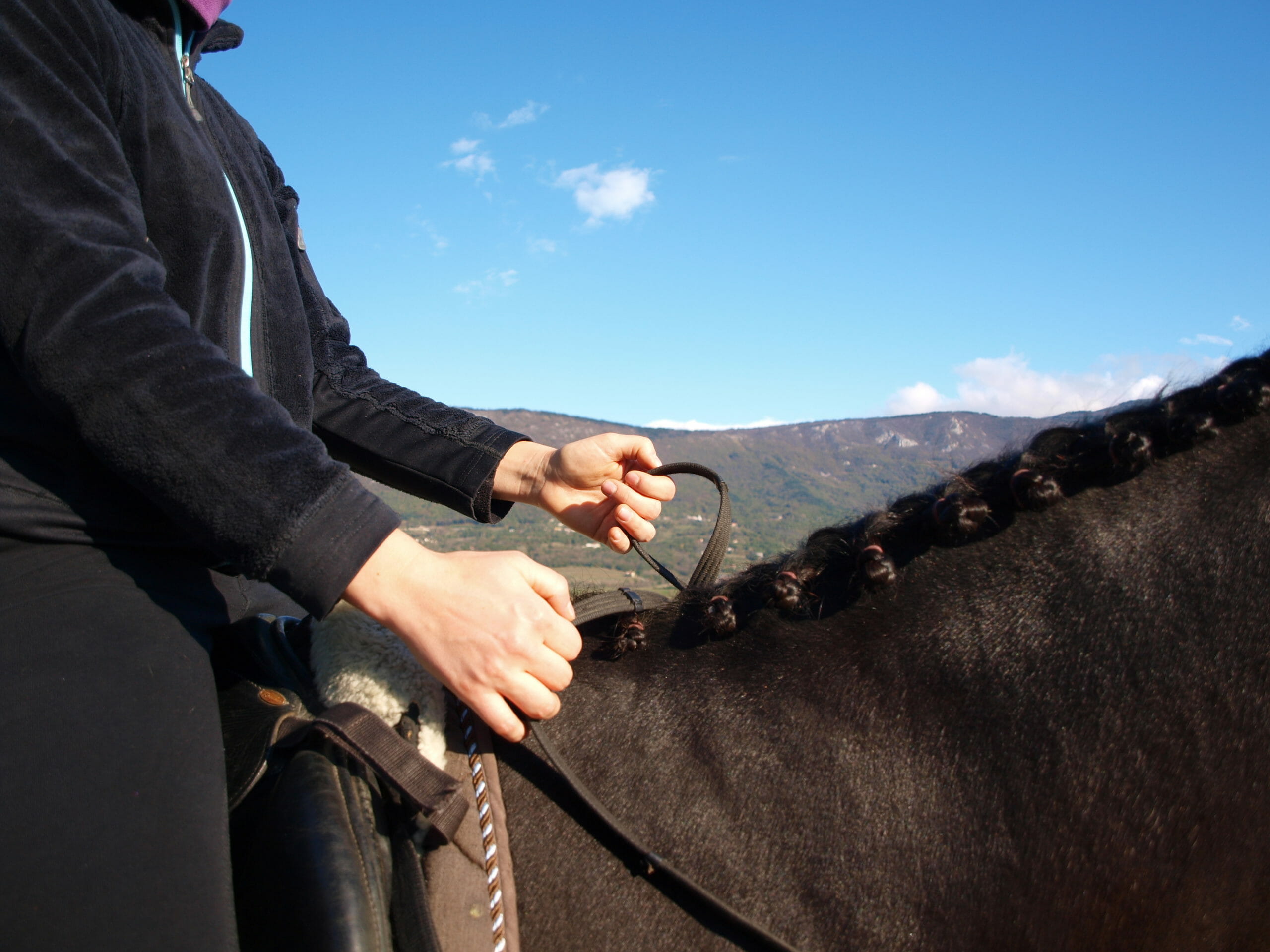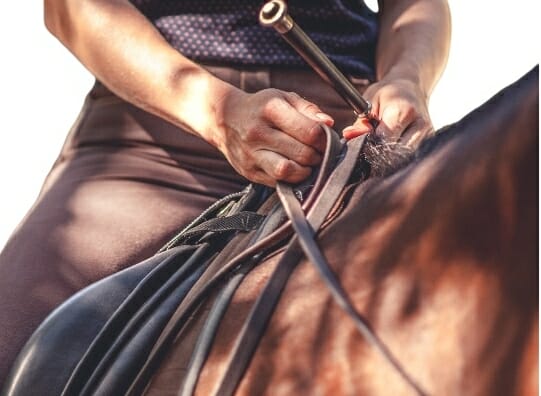CONTACT WITH THE HORSE’S MOUTH – PART ONE
BY ALJA KISILAK
DO YOU DO ALL THE TALKING OR CAN YOU LISTEN TOO?
Contact with the horse’s mouth is an ever popular, but often misinterpreted topic that can cause big misunderstandings with your horse. Riders are often tempted into using contact only for giving signals, instead of listening to them as well. Contact as a general term is defined as the act or state of two bodies, things or creatures meeting. With that in mind we can say that contact is there long before you take hold of the reins, it is there as soon as you first meet the horse. The FEI rulebook defines contact as a soft and constant connection between the rider’s hand and the horse’s mouth. When the horse is moving forward from the rider’s aids in a good rhythm, he starts to seek a connection with the rider’s hand by taking up contact on the reins. This is where most of the misunderstandings happen. Some riders interpret this as the horse leaning on the bit, or as the need for the rider to pull or yank backwards with the reins.

OUR HANDS ARE IMPORTANT
Think about which part of the body, aside from our mouth and our brain, most of us use most often during the day? You can probably agree that the answer is our hands. We use them to dress, eat, communicate, make, move and some can even use them to read. Just how important our hands are to us and how good our perception of them is, is well represented in the metaphor of the Homunculus. Homunculus is a metaphor for modern man that shows us just how much space individual parts of the body take up in the somatosensory cortex. The model is often represented by a caricature of a man with a big mouth (speech), tongue and hands. When we perceive something as being a threat to us, the first thing we use is our hands, either to defend, attack or hold onto something. When we sit on a horse’s back, we partly lose our sense of control, because we are no longer standing on solid ground, but sitting on a constantly moving horse with a mind of his own.

This feeling will unconsciously kick off the reflex to hold on with our legs and arms. This is why riders when trying to achieve balance often hold onto the reins too tightly. How stable and relaxed our hands are is often influenced by our fascial lines and by what is going on in the rest of our body. Thanks to fascial expert and pioneer Thomas Myers we know that our hands are influenced by four major fascial trains or lines of pull. All of these lines connect to other lines that run across our bodies and are used to transmit tension and forces. This is why it is very likely that a rider with a poor seat or tension in his legs, will compensate by taking a stronger hold of the reins, which will disturb the contact with the horse’s mouth.
In addition to that a lot of riders are taught that they can use the reins to achieve a certain posture or movement in the horse. Due to all of this, the reins are the most misused of the rider’s aids. This is especially true if the rider is poor at controlling his negative emotions, is not aware of how much rein he is using or if he lacks technical knowledge of training horses.
ABOUT ALJA KISILAK
Alja is a riding instructor, passionate about bringing out the best in the horse and the rider and making the experience fun for both of them. In 2008 she graduated from the Biotechnical University of Ljubljana with a thesis on Equine Psychology. Her wide knowledge on the learning theory, coupled with strong intuition and feel enables her to combine the science and art of riding into a coherent whole. She is constantly on the lookout for new knowledge and experiences and this search has led her all over Europe, where she learned from some of the best trainers of classical dressage. In addition to her work with horses, she has a gift for working with people too. She worked as a main trainer, equine assisted psychotherapy facilitator and riding instructor at MKZ Rakitna, Grad Prestranek and Cavallista riding school. Her unique skill set enables her to understand the horse’s and the rider’s perspective and their individual needs, which is the perfect combination for training that is tailored to both horse and rider.
PART TWO OF THIS BLOG IS AVAILABLE FOR EQUITOPIA MEMBERS – SIGN UP HERE







